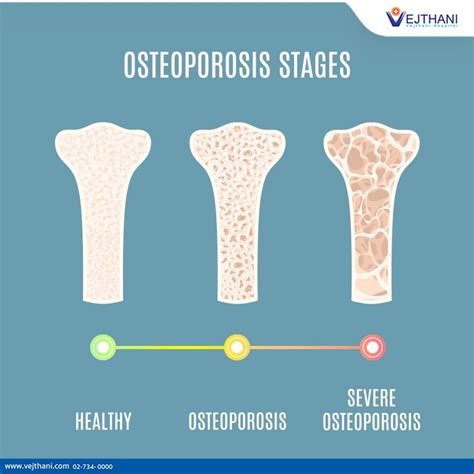Understanding Osteoporosis: Causes, Symptoms, and Treatment
Osteoporosis FAQ
How does osteoporosis affect the body?
Osteoporosis causes bones to become weak and brittle — so brittle that a fall or even mild stresses such as bending over or coughing can cause a break. Osteoporosis-related breaks most commonly occur in the hip, wrist or spine. Bone is living tissue that is constantly being broken down and replaced.
Is osteoporosis a skeletal disorder?
Osteoporosis is a systemic skeletal disorder characterized by low bone mass, micro-architectural deterioration of bone tissue leading to bone sterility, and consequent increase in fracture risk. It is the most common reason for a broken bone among the elderly.
What is the underlying mechanism of osteoporosis?
The underlying mechanism in all cases of osteoporosis is an imbalance between bone resorption and bone formation. In normal bone, matrix remodeling of bone is constant; up to 10% of all bone mass may be undergoing remodeling at any point in time.
How does osteoporosis happen?
Osteoporosis happens as you get older and your bones lose their ability to regrow and reform themselves. Your bones are living tissue like any other part of your body. It might not seem like it, but they’re constantly replacing their own cells and tissue throughout your life.
What are the first signs of osteoporosis?
However, after a certain amount of bone loss, the following may occur. This is often the first sign of osteoporosis. If you have osteoporosis, the force of a simple fall to the ground (from the height of a standard chair or less) is often enough to fracture a bone.
What does osteoporosis mean?
(The word osteoporosis literally means 'porous bones'). Bone tissue is made of tough, elastic fibres (collagen fibres) and gritty, hard material (minerals). It is a living tissue and contains cells that make, mould and take back up (resorb) bone. Initially, as you grow, bone forms faster than it is resorbed.
How does osteoporosis affect bones?
Our bones are living tissue that give our body structure, allow us to move and protect our organs. Osteoporosis causes the bones to become more porous and fragile, greatly increasing the risk of painful and often disabling broken bones (known as fragility fractures).
What is osteoporosis & how is it diagnosed?
Osteoporosis is a health condition that weakens bones, making them fragile and more likely to break. It develops slowly over several years and is often only diagnosed when a fall or sudden impact causes a bone to break (fracture). However, breaks can also happen in other bones, such as in the arm or pelvis.
Osteoporosis References
If you want to know more about Osteoporosis, consider exploring links below:
What Is Osteoporosis
- https://www.nhs.uk/conditions/osteoporosis/
- https://www.mayoclinic.org/diseases-conditions/osteoporosis/symptoms-causes/syc-20351968
- https://www.ageuk.org.uk/information-advice/health-wellbeing/conditions-illnesses/osteoporosis/
- https://www.niams.nih.gov/health-topics/osteoporosis/basics/symptoms-causes
- https://theros.org.uk/information-and-support/osteoporosis/
- https://my.clevelandclinic.org/health/diseases/4443-osteoporosis
- https://www.nhsinform.scot/illnesses-and-conditions/muscle-bone-and-joints/conditions/osteoporosis
- https://en.wikipedia.org/wiki/Osteoporosis
- https://www.healthline.com/health/osteoporosis
Osteoporosis Information
Explore Related Topics
How Long Does it Take to Observe Bone Health Improvements with Testosterone Replacement Therapy?
Engage in a conversation about the timeline for witnessing improvements in bone health when undergoing testosterone replacement therapy.
Best Practices: How to Monitor Bone Health During Testosterone Replacement Therapy?
Share insights and strategies for effectively monitoring bone health when undergoing testosterone replacement therapy.
Testosterone Replacement Therapy vs. Other Treatments: Which Is Best for Improving Bone Health?
Engage in a comparison discussion on the effectiveness of testosterone replacement therapy versus other treatments for enhancing bone health in men.
What are the Potential Side Effects of Hormone Replacement Therapy?
Explore the potential side effects associated with hormone replacement therapy for erectile dysfunction. Engage in insightful discussions to understand the risks and make well-informed decisions.
Can Hormone Replacement Therapy Improve Libido and Sexual Desire?
Dive into the fascinating world of hormone replacement therapy and its impact on libido and sexual desire. Exchange ideas and personal anecdotes with others who have undergone this treatment.
Testosterone Replacement Therapy: Is it an Effective Treatment for Osteoporosis in Men?
Dive into the role of testosterone replacement therapy as a potential treatment option for osteoporosis in men.
Can Testosterone Replacement Therapy Improve Bone Health in Men?
Explore the potential benefits of testosterone replacement therapy for promoting optimal bone health in men.
